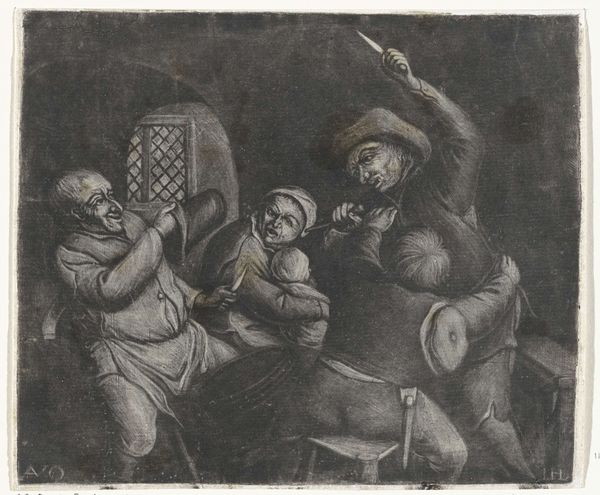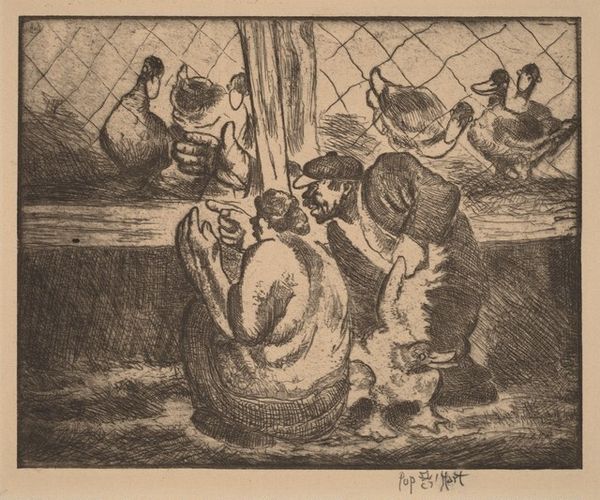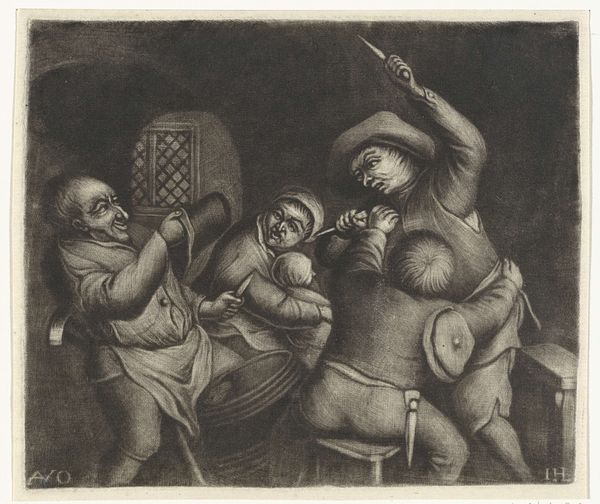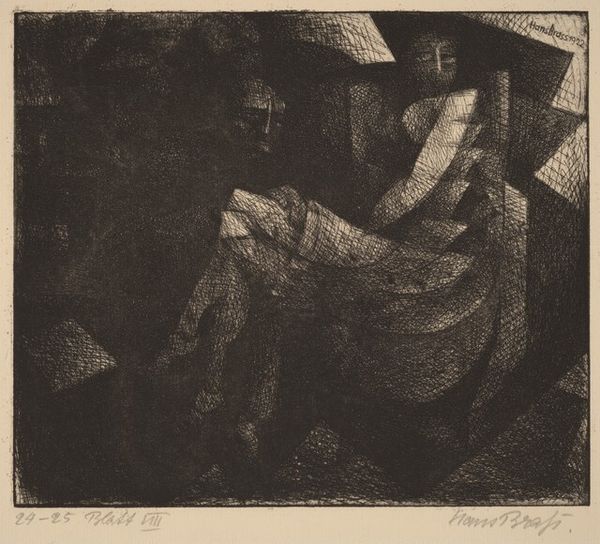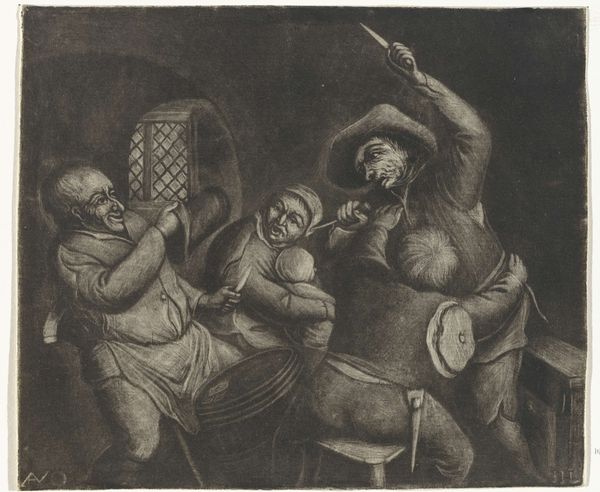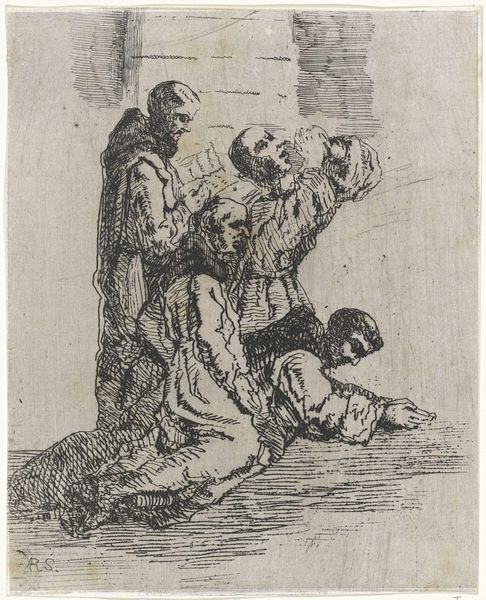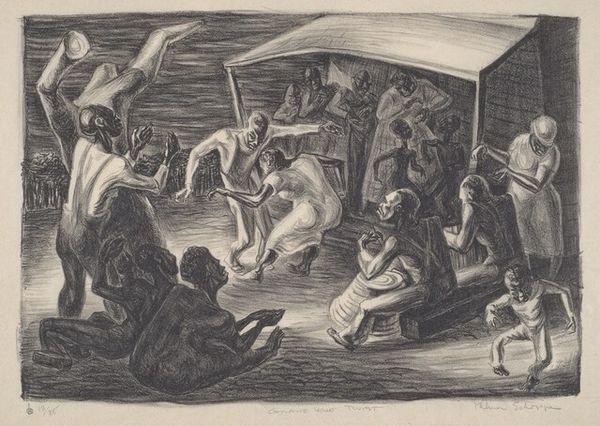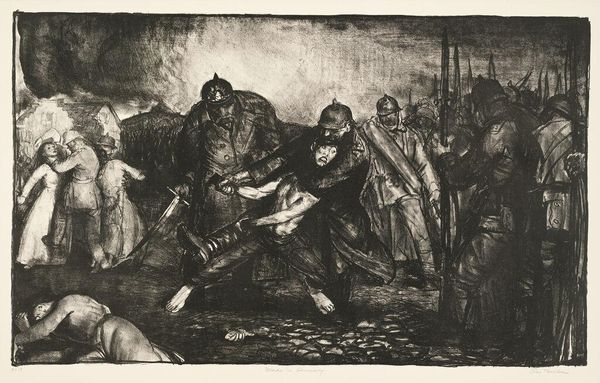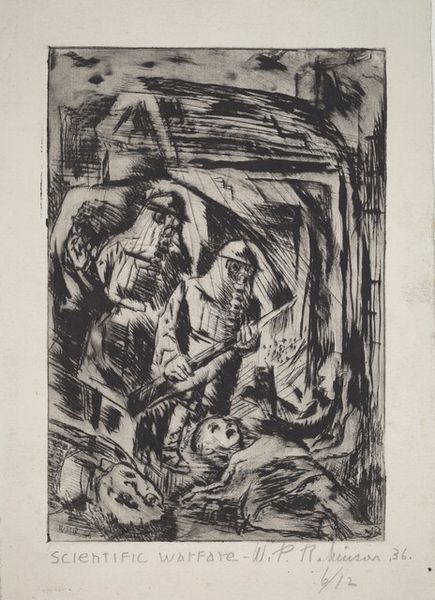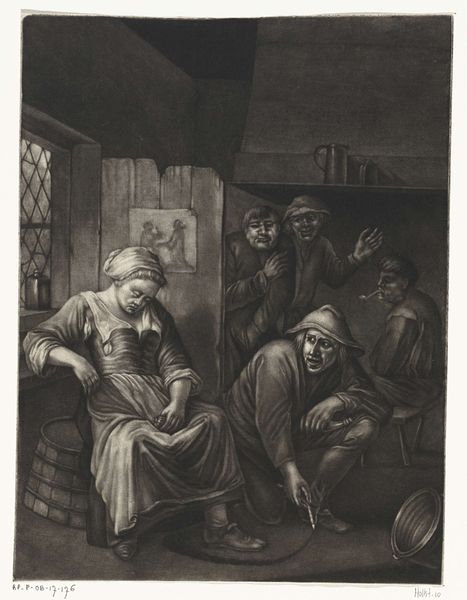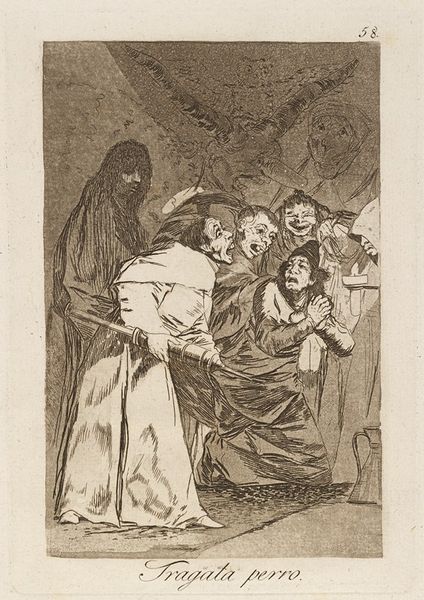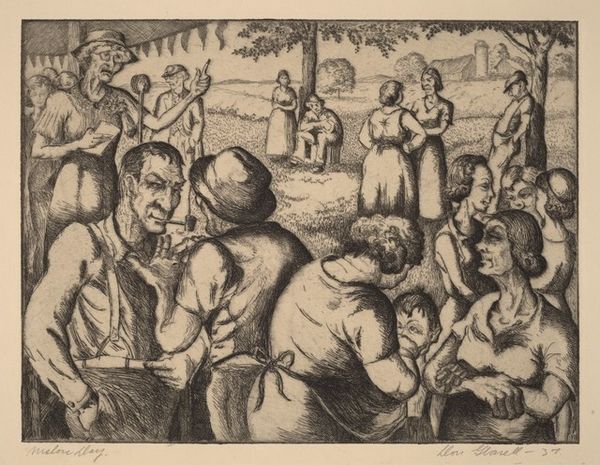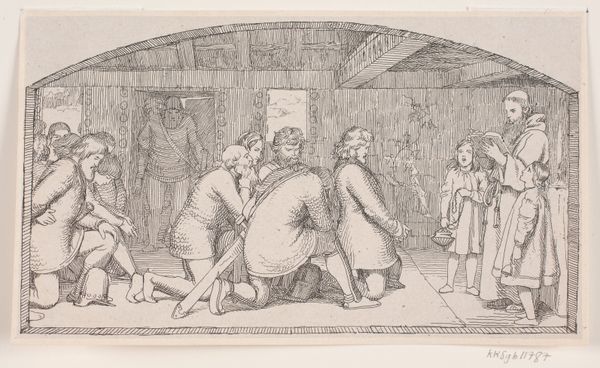
Dimensions: image: 25.8 × 34.4 cm (10 3/16 × 13 9/16 in.) sheet: 30 × 38.8 cm (11 13/16 × 15 1/4 in.)
Copyright: National Gallery of Art: CC0 1.0
Curator: Here we have George Overbury “Pop” Hart’s “Excursion Boat,” an etching from 1926. I’m immediately struck by its air of casual intimacy. The close groupings of figures suggest a shared journey and purpose, whether it's pleasure or something more… Editor: It does have an appealingly melancholic mood, doesn’t it? Like a smoky memory, softened by time and distance. Look at the subtle line work! The harp and fiddle almost vibrate, in contrast with the still gazes and heavy brows on some of the faces. Curator: Hart’s repeated use of figuration in his works like this can be interpreted as symbols for working class experiences—their leisure, labor, or displacement. The way he presents them, however, feels human and not didactic. Editor: And even ennobling, in a way? Take the smoking gentleman in the foreground. He’s given as much care as the fiddler, as the figures cluster in the back. He possesses the dignity of work… or escape? What’s especially suggestive here is how little personal interaction there seems to be between these clustered individuals. What are they escaping from? What might they be seeking? Curator: You could say the passengers symbolize different stages or archetypes. The smoking man could symbolize maturity; the family perhaps symbolizes future and hope… Editor: Or captivity. Look at their expressions! I think the way these types recur throughout art history, it hints at broader societal structures—questions of class, labor, even colonialism, considering Hart travelled extensively. There’s definitely an ambiguity present that I’m curious about. Curator: Right. Even the title "Excursion Boat" evokes multiple layers of meaning; is it really a simple boat trip, or something more metaphoric? The cultural narratives embedded within its symbolism resonate even today. Editor: And it encourages a space to look back—with a contemporary lens—at those narratives and consider, from whose perspectives were those excursions being undertaken, and what impact did they have? Curator: Indeed. Art like this, despite its age, encourages that vital reevaluation. Editor: I agree. This artwork demonstrates that we continue to ask difficult questions of it and the society it reflects.
Comments
No comments
Be the first to comment and join the conversation on the ultimate creative platform.

